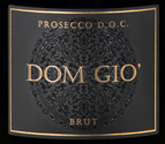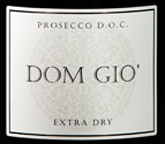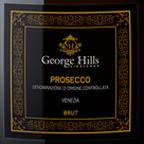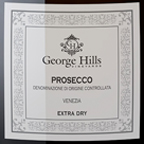More about Prosecco
CLOSE
The Prosecco Wine
Prosecco is obtained from a number of native grape varieties that leave a pleasant fruity flavor at a low volume of alcoholic percentage, the lowest among all the high quality sparkling wines worldwide.
The most important of these is the rustic and vigorous Glera, which has hazel-colored shoots and fairly large, elongated, loosely-packed bunches and handsome golden yellow berries that stand out against the bright green of the leaves.
Variants
The Sparkling Wine is produced in Brut, Extra Dry and Dry versions, depending on the residual sugar contained in the wine: “Brut” is the driest style, “Dry” the sweetest.
Brut
This is the most modern and internationally popular version. It displays typical aromas of citrus fruits along with vegetal notes and hints of crusty bread, combined with an attractive liveliness on the palate. The residual sugar varies between 0 and 12 g/l.
Extra dry
This is the traditional version. Its color is bright straw, enlivened by the bubbles of the perlage. It offers rich scents of apples and pears, together with a hint of citrus fruits that gives way to floral tones. On the palate it is mellow yet crisp thanks to its brisk acidity. The residual sugar varies between 12 and 17 g/l.
Dry
This is the least common version, which highlights the wine’s floral fruitiness. It displays a pale straw yellow colour, a delicate, fruity fragrance with hints of citrus fruits, white peaches and green apples, and a tangy, refreshing yet mellow flavor. The residual sugar varies between 17 and 32 g/l.
Prosecco Production Process
These are its distinctive characteristics. After the harvest the grapes, picked by hand in the various vineyards, are taken to the winery in order to begin the production process.
The first stage is pressing, carried out using sophisticated machinery that acts on the grapes in a gentle manner, thus extracting only the free-run juice, which comes from the heart of each berry. This is followed by settling, in which the cloudy must is chilled to 5°-10° C and kept in stainless steel tanks for 10-12 hours. At the end of this operation, vinification of the clear part of the most begins thanks to natural yeasts which, added to the must, start off the alcoholic fermentation. This lasts for 15–20 days in stainless steel at a constant temperature of 18°-20° C. At the end of vinification one obtains the base wine. The prise de mousse takes place when the base wine has become clear. The various parcels of wine that are available in the winery are – after careful tasting – blended together: these wines, which up until this moment have been kept separate according to their origin, date of harvest and organoleptic properties, are mixed together in very precise proportions.
The Martinotti - Charmat Method
The wine is made sparkling using the Martinotti - Charmat Method, by introducing it into large pressurized tanks together with sugar and yeasts. This technique allows one to preserve the grapes’ varietal aromas, giving a fruity and floral wine. In this method, during re-fermentation the yeasts feed on the sugar to produce CO₂, or in other words the silky bubbles that are characteristic of Prosecco. The Martinotti- Charmat Method calls for re-fermentation in pressurized tanks for at least 30 days, while the Classic Method takes place in bottle and lasts many months, or even years. Both, however, are based on the same principle, that is to say the transformation of sugar in carbon dioxide, thanks to the action of yeasts. Once the wine is sparkling, bottling takes place and, after 30-40 days, the wine is ready to be released onto the market.
Our labels




The most important of these is the rustic and vigorous Glera, which has hazel-colored shoots and fairly large, elongated, loosely-packed bunches and handsome golden yellow berries that stand out against the bright green of the leaves.
The Sparkling Wine is produced in Brut, Extra Dry and Dry versions, depending on the residual sugar contained in the wine: “Brut” is the driest style, “Dry” the sweetest.
Brut
This is the most modern and internationally popular version. It displays typical aromas of citrus fruits along with vegetal notes and hints of crusty bread, combined with an attractive liveliness on the palate. The residual sugar varies between 0 and 12 g/l.
Extra dry
This is the traditional version. Its color is bright straw, enlivened by the bubbles of the perlage. It offers rich scents of apples and pears, together with a hint of citrus fruits that gives way to floral tones. On the palate it is mellow yet crisp thanks to its brisk acidity. The residual sugar varies between 12 and 17 g/l.
Dry
This is the least common version, which highlights the wine’s floral fruitiness. It displays a pale straw yellow colour, a delicate, fruity fragrance with hints of citrus fruits, white peaches and green apples, and a tangy, refreshing yet mellow flavor. The residual sugar varies between 17 and 32 g/l.
Prosecco Production Process
These are its distinctive characteristics. After the harvest the grapes, picked by hand in the various vineyards, are taken to the winery in order to begin the production process.
The first stage is pressing, carried out using sophisticated machinery that acts on the grapes in a gentle manner, thus extracting only the free-run juice, which comes from the heart of each berry. This is followed by settling, in which the cloudy must is chilled to 5°-10° C and kept in stainless steel tanks for 10-12 hours. At the end of this operation, vinification of the clear part of the most begins thanks to natural yeasts which, added to the must, start off the alcoholic fermentation. This lasts for 15–20 days in stainless steel at a constant temperature of 18°-20° C. At the end of vinification one obtains the base wine. The prise de mousse takes place when the base wine has become clear. The various parcels of wine that are available in the winery are – after careful tasting – blended together: these wines, which up until this moment have been kept separate according to their origin, date of harvest and organoleptic properties, are mixed together in very precise proportions.
The Martinotti - Charmat Method
The wine is made sparkling using the Martinotti - Charmat Method, by introducing it into large pressurized tanks together with sugar and yeasts. This technique allows one to preserve the grapes’ varietal aromas, giving a fruity and floral wine. In this method, during re-fermentation the yeasts feed on the sugar to produce CO₂, or in other words the silky bubbles that are characteristic of Prosecco. The Martinotti- Charmat Method calls for re-fermentation in pressurized tanks for at least 30 days, while the Classic Method takes place in bottle and lasts many months, or even years. Both, however, are based on the same principle, that is to say the transformation of sugar in carbon dioxide, thanks to the action of yeasts. Once the wine is sparkling, bottling takes place and, after 30-40 days, the wine is ready to be released onto the market.
Our labels




The first stage is pressing, carried out using sophisticated machinery that acts on the grapes in a gentle manner, thus extracting only the free-run juice, which comes from the heart of each berry. This is followed by settling, in which the cloudy must is chilled to 5°-10° C and kept in stainless steel tanks for 10-12 hours. At the end of this operation, vinification of the clear part of the most begins thanks to natural yeasts which, added to the must, start off the alcoholic fermentation. This lasts for 15–20 days in stainless steel at a constant temperature of 18°-20° C. At the end of vinification one obtains the base wine. The prise de mousse takes place when the base wine has become clear. The various parcels of wine that are available in the winery are – after careful tasting – blended together: these wines, which up until this moment have been kept separate according to their origin, date of harvest and organoleptic properties, are mixed together in very precise proportions.